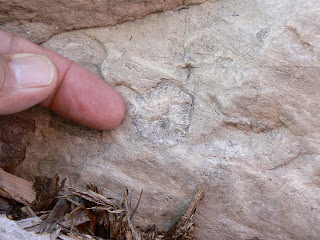 Here are some photos from last week taken by Margarete Hasserodt at the Nature Area. She joined the Grosse Ile Wildlife Photography club led by Karen Skrocki and she's getting lots of practice. This tree in full bloom at the Nature Area is a Flowering Dogwood (Cornus florida).
Here are some photos from last week taken by Margarete Hasserodt at the Nature Area. She joined the Grosse Ile Wildlife Photography club led by Karen Skrocki and she's getting lots of practice. This tree in full bloom at the Nature Area is a Flowering Dogwood (Cornus florida). 
MH notes that this tree was donated by Al Schweickart as a Memorial tree for his wife Eleanor in 1995. He was the father of John Schweickart and a great supporter of the Nature Area. Al arrived for every workday and brought his grandsons along. He lived in Dearborn and also built bird houses for our annual meetings' raffle. Margarete says she has an old picture of Al from their first bird walk at the Nature Area and remembers fondly how "We were all so young!"

In late summer the dogwood tree is loaded with fruit. Although the fruit is poisonous to humans, it is very good for wildlife. It doesn't last long on the branches at the Nature Area.
observed resting on a limestone rock. It's a Common Whitetail Dragonfly. Can you see that the ends of the forewings and hindwings look like little flags. Julie wrote that they started emerging in early June and are one of our most abundant summer dragonflies around ponds and shorelines. Interestingly, MH read that dragonflies rest with wings outstretched while the "more delicate" damselfly rests with wings folded. Hmm, makes me wonder: who came up with these names?
In case you're wondering, dragonflies come in both sexes, as do damselflies.  Here's a neat photo of a common damselfly (from Wikipedia). The females both lay eggs in water where the nymphs develop, feeding on other aquatic insects. They leave the water after several growing stages; the skin splits and the adult emerges. You'll be happy to learn that they don't sting or bite and they eat small insects like mosquitoes. MH knew that Julie was a good reference for her question because Julie performed a dragonfly and damselfly survey at the Nature Area a few years ago. Julie is also author of the book Birds of Southeast Michigan and we appreciate her interest in our area.
Here's a neat photo of a common damselfly (from Wikipedia). The females both lay eggs in water where the nymphs develop, feeding on other aquatic insects. They leave the water after several growing stages; the skin splits and the adult emerges. You'll be happy to learn that they don't sting or bite and they eat small insects like mosquitoes. MH knew that Julie was a good reference for her question because Julie performed a dragonfly and damselfly survey at the Nature Area a few years ago. Julie is also author of the book Birds of Southeast Michigan and we appreciate her interest in our area.
 Here's a neat photo of a common damselfly (from Wikipedia). The females both lay eggs in water where the nymphs develop, feeding on other aquatic insects. They leave the water after several growing stages; the skin splits and the adult emerges. You'll be happy to learn that they don't sting or bite and they eat small insects like mosquitoes. MH knew that Julie was a good reference for her question because Julie performed a dragonfly and damselfly survey at the Nature Area a few years ago. Julie is also author of the book Birds of Southeast Michigan and we appreciate her interest in our area.
Here's a neat photo of a common damselfly (from Wikipedia). The females both lay eggs in water where the nymphs develop, feeding on other aquatic insects. They leave the water after several growing stages; the skin splits and the adult emerges. You'll be happy to learn that they don't sting or bite and they eat small insects like mosquitoes. MH knew that Julie was a good reference for her question because Julie performed a dragonfly and damselfly survey at the Nature Area a few years ago. Julie is also author of the book Birds of Southeast Michigan and we appreciate her interest in our area. 











